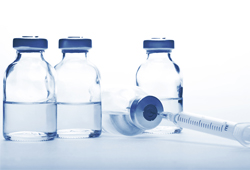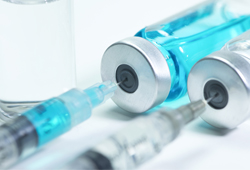 Summary:
Summary:
On September 29, 2023, the U.S. District Court for the District of Columbia vacated a Trump-era rule from 2021 that allowed insurers to exclude drug manufacturer co-pay support coupons and assistance from a patient’s annual cost-sharing caps. This practice, commonly referred to as a copay accumulator program, is typically used by insurance companies and pharmacy benefit managers to control drug spending, especially for high-cost specialty drugs, like those required by HIV patients.
Under typical prescription drug insurance programs, patients are obligated to pay a deductible and cost-sharing (i.e. a copay) throughout the plan year, up to an out-of-pocket spend cap. Once the patient hits that spend cap, the insurance company is responsible for the patient’s prescription drug costs.
Under an accumulator program, on the other hand, an insurance company does not count a manufacturer’s copay support (for example, a copay card that a patient presents at a pharmacy to cover the cost of the copay) towards a patient’s annual deductible or out-of-pocket maximum. By excluding manufacturer copay support and coupons from patients’ cost-sharing cap, this means that, even after a manufacturer’s copay support is exhausted for the year, patients remain on the hook for all cost sharing obligations up to the insurance plan’s out of pocket maximums. Many states have implemented laws to ban copay accumulator programs, asserting that such programs actually increase the financial burden on patients, especially with respect to specialty or more expensive drugs. As of June 2023, 19 states have implemented copay accumulator program bans.
HIV and Hepatitis Policy Institute et al v. HHS was brought by patient advocacy groups including the HIV and Hepatitis Policy Institute and the Diabetes Patient Advocacy Coalition, among others, who challenged a May 2020 rule from HHS, the “Notice of Benefit and Payment Parameters for 2021” (85 Fed. Reg. 29164, 29230-35, 29261 (May 14, 2020)) (the “2021 NBPP”) that permitted insurers to impose accumulator polices. Plaintiffs opposed the accumulator program, asserting that manufacturer copay support should count towards calculating patients’ cost sharing obligations and should not be excluded from such calculations.
In ruling in favor of the plaintiffs on their motion for summary judgment, the U.S. District Court set aside the 2021 NBPP, largely supporting plaintiffs’ challenges that the 2021 NBPP rule’s language is internally contradictory, that it runs counter to the statutory definition of “cost sharing” found in the Affordable Care Act, and that it runs counter to the agencies’ pre-existing regulatory definition of “cost sharing.” HHS had previously defined “cost sharing” in a 2012 regulation as “any expenditure required by or on behalf of an enrollee with respect to essential health benefits,” which by its terms includes “deductibles, coinsurance, copayments, or similar charges, but excludes premiums, balance billing amounts for non-network providers, and spending for non-covered services.” See 45 C.F.R. 155.20. In other words, the regulation treats cost sharing is an “expenditure” by or on behalf of a plan enrollee. According to plaintiffs, and as affirmed by the court, this includes manufacturer copay assistance support.
The court disagreed with the government’s technical arguments regarding the language of the 2021 NBPP (i.e. that manufacturer copay support is actually a “reduction” in the amount the patient owes towards cost sharing or a reduction in the “actual economic impact” on the drug manufacturer and not an “expenditure”), concluding that the 2012 regulation was likely intended to define “cost sharing” as costs that are (1) required of an insurance plan enrollee and (2) paid by or on behalf of that enrollee – including manufacturer copay coupons and assistance.
It is unclear if the ruling will be appealed; however, as a result of the District Court’s ruling, the government will use an earlier 2020 version of the rule which allowed insurers to exclude from cost-sharing caps only copay support coupons for branded drugs that have available generic equivalents; if there is no generic equivalent, under the 2020 version of the rule, manufacturer copay support must be counted toward cost sharing.
Conclusions: The U.S. District Court ruling is a significant development for drug manufacturers who offer copay support as a means of providing relief to patients with respect to cost-sharing requirements under their insurance coverage as opposed to offering significant rebates, discounts, or other contracting strategies. However, manufacturers of branded drugs with a generic equivalent will still need to consider how copay accumulator programs could affect access in those states that have not yet banned the practice. Notably, in the wake of this ruling, patient advocacy organizations have indicated that they will continue to advocate for a comprehensive state and federal level ban on copay accumulator programs (e.g. Immune Deficiency Foundation).
Goodwin will continue to monitor any further developments in this case and the impact of copay accumulator programs on the market.
 Our Life Sciences Regulatory & Compliance team has launched a new resource page, keeping you up-to-date on the latest regulatory developments affecting laboratory developed tests (LDTs). Our dedicated LDT page provides foundational materials, legislative and regulatory history, and updates and analyses regarding initiatives to increase oversight over LDTs, including FDA’s LDT Proposed Rule (October 2020). Our Life Sciences Regulatory & Compliance team will continue to keep this page updated with the latest happenings.
Our Life Sciences Regulatory & Compliance team has launched a new resource page, keeping you up-to-date on the latest regulatory developments affecting laboratory developed tests (LDTs). Our dedicated LDT page provides foundational materials, legislative and regulatory history, and updates and analyses regarding initiatives to increase oversight over LDTs, including FDA’s LDT Proposed Rule (October 2020). Our Life Sciences Regulatory & Compliance team will continue to keep this page updated with the latest happenings. The third quarter in the life sciences space saw notable developments in significant agency enforcement actions:
The third quarter in the life sciences space saw notable developments in significant agency enforcement actions: On October 23, 2023, FDA announced the availability of a revised draft guidance titled “Communications From Firms to Health Care Providers Regarding Scientific Information on Unapproved Uses of Approved/Cleared Medical Products.” The draft guidance supersedes the agency’s 2014 draft guidance, “Distributing Scientific and Medical Publications on Unapproved New Uses,” and it provides more direction for industry on how information regarding unapproved uses of approved/cleared medical products can appropriately be shared with healthcare providers (HCPs).
On October 23, 2023, FDA announced the availability of a revised draft guidance titled “Communications From Firms to Health Care Providers Regarding Scientific Information on Unapproved Uses of Approved/Cleared Medical Products.” The draft guidance supersedes the agency’s 2014 draft guidance, “Distributing Scientific and Medical Publications on Unapproved New Uses,” and it provides more direction for industry on how information regarding unapproved uses of approved/cleared medical products can appropriately be shared with healthcare providers (HCPs). On October 10, 2023, the Enlarged Board of Appeal of the European Patent Office (EPO) issued a
On October 10, 2023, the Enlarged Board of Appeal of the European Patent Office (EPO) issued a  Last month, FDA issued a
Last month, FDA issued a  The U.S. Food and Drug Administration (FDA) has announced an upcoming
The U.S. Food and Drug Administration (FDA) has announced an upcoming  After an over decade-long discourse amongst interested stakeholders, on October 3, 2023, FDA unveiled its
After an over decade-long discourse amongst interested stakeholders, on October 3, 2023, FDA unveiled its  Summary:
Summary:
 As the life sciences, medtech, and diagnostic industries continue to expand and grow increasingly complex, so do the legal, regulatory, and compliance landscape. To help companies and investors navigate the many evolving and emerging laws and regulations across pharmaceuticals, biologics, medical devices, diagnostics, and laboratory testing, our Life Sciences Regulatory & Compliance team has provided an overview of key developments. We update and publish a quarterly tracker detailing these developments. You can read about the Q4 2023 updates
As the life sciences, medtech, and diagnostic industries continue to expand and grow increasingly complex, so do the legal, regulatory, and compliance landscape. To help companies and investors navigate the many evolving and emerging laws and regulations across pharmaceuticals, biologics, medical devices, diagnostics, and laboratory testing, our Life Sciences Regulatory & Compliance team has provided an overview of key developments. We update and publish a quarterly tracker detailing these developments. You can read about the Q4 2023 updates